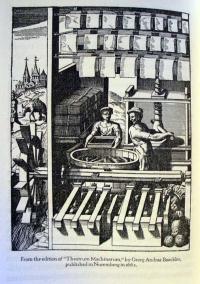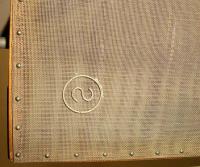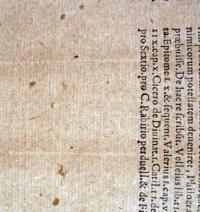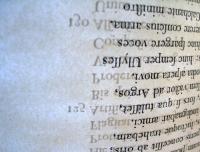Although most paper is now made by machine, for hundreds of years it was made by hand, one sheet at a time. Western papermakers would tear up old clothes and rags, and soak them in water until they dissolved into a thick soup of fibers. A small amount of the liquid was scooped into a wire screen mould where the fibers were allowed to settle down onto the screen and the excess water was drained off. Each sheet was then dried between blankets of felt.
The screen was originally made with brass wires strung across the length of the mould (laid lines), secured at several crossing wires (chain lines). These wires left an impression in the paper that can be seen when holding the sheet up to the light. We call this laid paper.
In the 1750s, James Whatman (1702-1759), owner of the largest papermill in England, developed a paper mould with brass wires that were woven together. The new design produced paper with a smoother surface, particularly good for drawings and watercolors. The first book published with wove paper was John Baskerville’s 1757 Virgil.
Laid paper mould [left]; wove mould [right]
Laid paper [left]; wove paper [right]
These paper moulds are from the collection of graphic arts. The papers are samples found in:
Dard Hunter (1883-1966). Old papermaking (Chillicothe, Ohio: Mountain House Press, 1923), which includes 6 samples of paper manufactured from the 15th to the 20th century. Graphic Arts GAX, Oversize TS1090 .H8q
To see the original 1757 Virgil on wove paper, see Publii Virgilii Maronis Bucolica, Georgica et Aeneis (Birminghamiae: Typis Johannis Baskerville, 1757) Rare Books: Junius Morgan Collection (VRG) Oversize 2945.1757.2q




